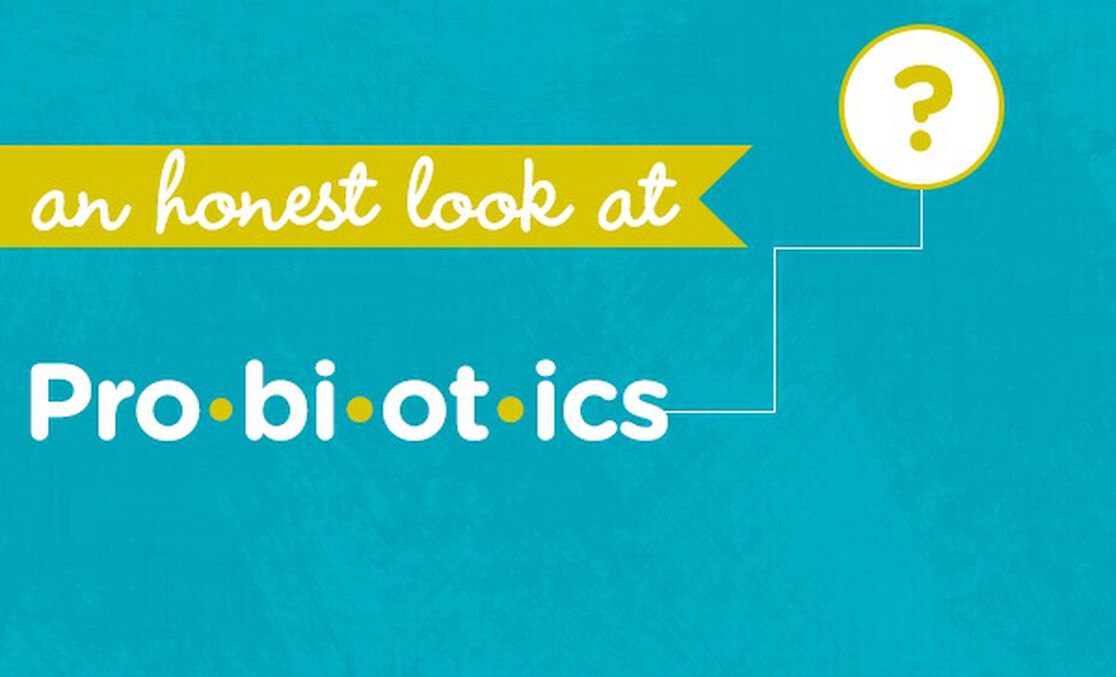This is part of our ongoing series helping consumers better understand chemicals, chemistry, and product formulations. We translate the science, bust the myths, and give you an honest assessment, so you can make informed choices for your family!
Ingredient: Probiotics
Genus names: Saccharomyces, Streptococcus, Lactobacillus, Bifidobacterium
Sub-strains: Some products will list the specific sub-strain (e.g., Bifidobacterium lactis BB-12). Much of the research has been done on specific sub-strains, which hold slight differences.
What They Are: “Probiotics” is a catch-all term for helpful, “friendly bacteria” and yeasts that assist in balancing levels of indigenous microflora in and on the human body. (Did you know your body contains more bacterial cells than human cells? By ten to one!) Probiotics are added to many different products, such as supplemental powders, yogurt, tablets, beverages, and even skin care products.
What They Do: Our gastrointestinal tract contains hundreds of different species of bacteria, often referred to as intestinal flora. This bacteria works together to keep us in a normal balance and make sure everything functions smoothly. However, when this balance is disturbed by illness, inflammation, or antibiotic treatment, the smooth sailing can turn rocky. Probiotics help recolonize the small intestine and get rid of disease-causing bacteria resulting in a restoration of our normal, healthy balance. Probiotics can also produce substances that prevent disease-causing bacteria and support the body's own immune system.
Difference in strains: There’s a wide range of research for a variety of probiotic organisms (alone or in combination), and the most notable findings (by condition and across different age groups including young children and kids) include:
Irritable Bowel Syndrome (IBS) and abdominal pain:
- A study of children (aged 5 to 14) with IBS showed that taking Lactobacillus GG significantly reduced the frequency and severity of abdominal pain. The treatment was well tolerated and no adverse effects were reported.
Lactobacillus reuteri DSM 17938 has been shown to reduce colic in infants. A 3-month study found that, compared to placebo, infants receiving the probiotic drops had a significant decrease in crying time, regurgitation and an increase in frequency of stools. Treated infants also had significantly fewer visits to emergency rooms for colic, fewer lost working days among parents and lower use of other treatments for abdominal discomfort.
Diarrhea caused by antibiotics:
Lactobacillus GG and Lactobacillus reuteri have been shown to reduce the duration of diarrhea due to certain infections in infants and young children.
A 2012 review of over 60 published studies found that probiotic use was associated with an overall 42% lower risk of developing diarrhea due to antibiotic treatment. Additionally, there was a 36% lower risk of diarrhea across studies specifically using forms of Lactobacillus and a 52% lower risk of diarrhea across studies using the probiotic yeast Saccharomyces.
Vaginal bacterial infections:
A combination of L. rhamnosus GR-1 and L. fermentum RC-14 taken orally has been shown to reduce colonization of the vagina by potential pathogenic bacteria and yeast. Also, vaginal suppositories containing Lactobacillus organisms have shown therapeutic benefit.
Cold and flu:
A combination of Lactobacillus acidophilus NCFM (5 billion cells per day) and Bifidobacterium animalis subsp lactis Bi-007 given to children (aged 3 to 5) was shown to reduce the incidence of fever by 73%, coughing by 62%, runny nose by 59% and also reduced the duration of these symptoms by 48%. Lactobacillus acidophilus alone was also effective but not as effective as the combination product.
Even though the evidence is still under active research, probiotics have been associated with treating many other conditions and their symptoms including: lactose intolerance, respiratory and GI problems resulting from cystic fibrosis, HIV-related diarrhea, Crohn's disease, ulcerative colitis, pouchitis, cancer prevention, high blood cholesterol, tuberculosis, eczema, acne, canker sores, dental cavities, milk allergies, hay fever, and the prevention of respiratory infections in children.
Additionally, while probiotics are currently primarily used for internal bacterial balance, exciting new research is showing they can be beneficial in topical (skin) applications, as well.
Why We Use Them: We chose to include Lactobacillus acidophilus in our Multi-Vitamin formulas to give them an extra boost of natural goodness that enhances digestion, immunity, and overall intestinal health. We’re also pleased to bring these healthy bacteria to benefit our skin care products (like our new Organic Baby Powder), and you may just see them on more Honest product ingredients lists in the near future!
Please let us know if you have any other questions or comments — we love hearing from our community!
References:
- Hempel, et al (2012). Probiotics for the Prevention and Treatment of Antibiotic-Associated Diarrhea, A Systematic Review and Meta-analysis. JAMA. 307 (18): 1959-1969.
- Leyer, L et al (2009) Probiotic Effects on Cold and Influenza-Like Symptom Incidence and Duration in Children, Pediatrics 124;2 172-179
- “Product Review: Probiotics for Adults, Children and Pets.” ConsumerLab.com 2014. web. March 2014.
- Reid, Gregor, et al. (2003) Oral use of Lactobacillus rhamnosus GR-1 and L. fermentum RC-14 significantly alters vaginal flora: randomized, placebo-controlled trial in 64 healthy women. FEMS Immunology and Medical Microbiology 35 (2003) 131-134.
- Ruggiero, F et al. (2010) A Randomized Controlled Trial of Lactobacillus GG in Children with
- Functional Abdominal Pain. Pediatrics 126(6): e1445-1452.
We aim to provide you with the most honest and credible information possible. This article was reviewed for accuracy by The Honest Team and was written based on sources that are linked at the bottom of the article.
blog_review_statement



